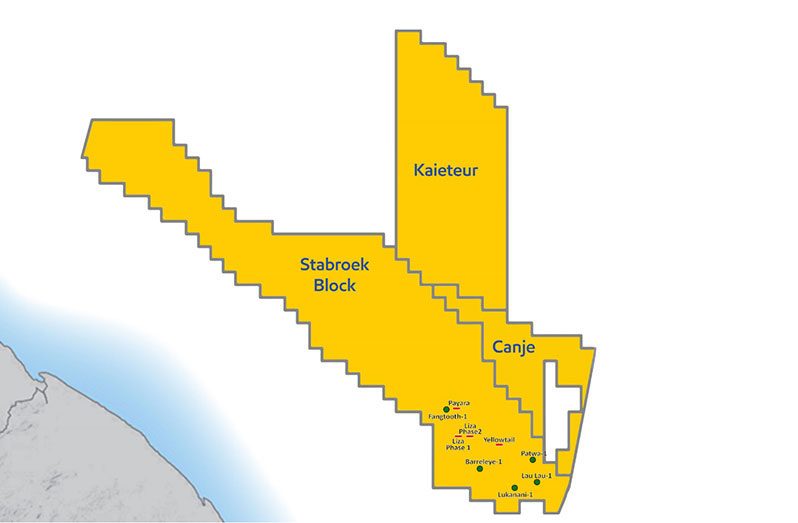PERSONS from across the country have been invited by ExxonMobil Guyana to learn about its proposed Uaru project and to put forward questions or concerns that they might have regarding this potential operation in the Stabroek Block, offshore Guyana.
In order to move forward with plans for Uaru, the company would have to obtain environmental authorisation from the Environmental Protection Agency (EPA). And part of this process involves engaging the public on the project.
The project, according to a summary from ExxonMobil, will be designed to add up to 250,000 barrels of oil per day to existing daily production volumes in Guyana.
Like the other Stabroek Block projects, the Uaru Development Project will involve drilling of production wells; installation, commissioning and operations of subsea umbilicals, risers and flowlines (SURF) and a floating production, storage, and offloading vessel (FPSO) for handling and offloading of produced hydrocarbons.
Further, the Uaru project will utilise marine support vessels as well as onshore infrastructure, including, but not limited to, shore bases, warehouses, storage and pipe yards, fabrication facilities, fuel supply facilities and waste management facilities in Guyana.

Such infrastructure will be used to support the drilling, installation, production and decommissioning operations of Uaru project. The company will drill approximately 40-76 wells offshore to support extraction of the oil from below the sea floor.
During peak production, approximately every four days, the oil will be pumped from the FPSO to a conventional oil tanker, which is owned/operated by third parties. The tanker will then export the oil to buyers.
“As a result of the intended developmental activities, possible effects on the environment may include impacts to marine water quality, air quality, marine fauna and socio-economic resources, among others.
“In keeping with the Environmental Protection Act, CAP. 20:05, Laws of Guyana, the EPA has determined that an environmental impact assessment (EIA) is required to be conducted before any decision to approve or reject the proposed project is taken, since this development may significantly impact the environment,” ExxonMobil said in an advertisement published in various newspapers.
As part of this process, members of the public have been invited to make written submissions to the EPA, setting out those questions which they require to be answered or considered in the EIA.
Additionally, there will be in-person scoping meetings from May 16 to 27 to provide project information. This exercise commenced at Flavio’s Hall, Santa Rosa, and will be held at various locations across the country over the next few days.




.png)









